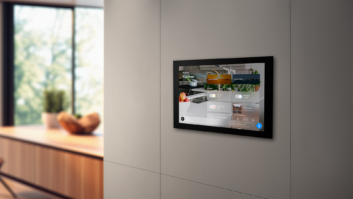Last week’s “Made by Google” event featured a number of new hardware products, including the company’s answer to Amazon Echo, Google Home. As my Residential Systems colleague Michael Heiss recently highlighted, at the core of all these products is the company’s AI initiative. This focus on AI is not just emblematic of the products themselves, but rather it lies at the core of Google’s long term strategic vision; “a move from mobile first to AI first” in the words of its CEO Sundar Pichai.

Google Home, set up via iPhone
As the topic of voice control in the home continues to gain momentum in CEDIA circles, I was struck by Google’s emphasis on the intelligence layer. In other words, Google Home is not being positioned as a voice-control product per se, but rather as an intelligent assistant that happens to be voice-enabled. This is not by accident. Google’s strategy here is subtle, but important, and it’s a message that home technology professionals should be paying close attention to.
After all, building smarter, more interactive environments has been at the core of our industry since its inception. Recent advances in voice control simply represent a case of the technology catching up to what we’ve been striving for for decades. But while voice control does promise to be the most convenient means of interacting with our homes, it is not the ultimate goal. Instead it’s simply a means to an end, namely a truly intelligent environment that our clients can interact with just as they would a friend or member of the family.
This sort of intelligence no doubt represents the future of the smart home. We’ve spent decades honing the craft of providing our clients with efficient means of controlling their environments. Naturally the next step is designing a home that understands user patterns, and uses that data to take proactive action. These homes will know who is coming and going and will queue up entertainment accordingly. They will be able to detect problems with our appliances and recommend maintenance, perhaps even tying in with local vendors to check on availability and pricing automatically. And yes, as much as I’d love to see us move past this cliché, someday our refrigerators will likely tell us if we’re running low on milk.
Clearly AI has a very prominent role to play as we look to the future of our industry. If we can conceive it, odds are that AI will soon make it possible. The only question is if, and how, home technology professionals will find a place in that value chain. So before we get too wrapped up in a conversation about voice control, let’s remember that it is just one piece of the puzzle. There’s a bigger game being played here. And it’s key that home technology professionals start to formulate a plan around it. So, what’s your AI strategy?







